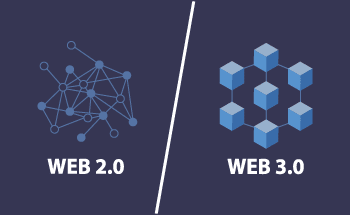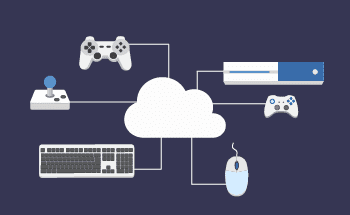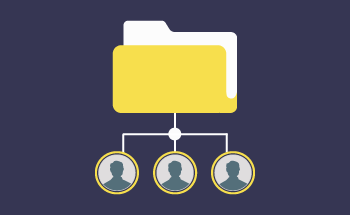Java Implementation of the Diffie-Hellman Algorithm for Clients and Servers
14:28, 12.04.2024
The emphasis on security is continuing to gain recognition; thus, the implementation of efficient cybersecurity strategies widens its spread.
A considerable part of today’s secure data exchange is wrapped around encryption. Encrypted communication channels protect data integrity and confidentiality. Managing the encryption protocols was always somewhat vague and complex, until the Diffie-Hellman algorithm.
In this article, we will look at what the Diffie-Hellman algorithm is all about, and why it’s important to know about its Java implementation.
Grasping the Diffie-Hellman Algorithm
The Diffie-Hellman (DH) algorithm is a key-exchange protocol that creates an option for two parties to communicate through a secure channel (even if accessing through an insecure network) by establishing a shared secret. It makes it possible to use a key to encrypt and decrypt communication through symmetric cryptography.
Let’s see how the Diffie-Hellman algorithm works.
So, each party has a piece of information they want to share privately, without interception. They then agree to mix the data they want to share with the general, publicly available information as the communication is held through a network that is not secure. Since the shared secrets are mixed with the general information, the two parties need to decrypt them to get access to the authentic data being exchanged. They can do so by identifying the data that belong to their shared secret and discarding the rest.
The concept doesn’t seem complex, but it’s very effective in cybersecurity practice. To an entity outside of the encrypted communication, it is virtually impossible to decrypt and get a hold of initial data.
The Diffie-Hellman algorithm was one of the first practical instances of public-key cryptography, and it was released into the world in 1976 by Whitfield Diffie and Martin Hellman. To this day, the Diffie-Hellman algorithm is considered one of the greatest inventions in cybersecurity.
Insight into Key Exchange Methods
Like any other key exchange method, the Diffie-Hellman algorithm performs a vital functions to ensure secure communication. Those include:
- Providing parties with an opportunity to agree establish a secret key used to create privacy for communication and a private key used for further encryption and decryption of data.
- Reducing the risk of impersonating attacks by facilitating the authentification process.
The Diffie-Hellman’s key exchange algorithm also ensures that the data is safe from third-party intrusion before, during, and after transmission.
The Diffie-Hellman algorithm is also used in blockchain technology. Blockchain utilizes encryption principles to ensure the transaction of assets without the need for third-party involvement. The Diffie-Hellman algorithm is an optional method of additional security of the blockchain network, that can help facilitate more privacy and anonymity.
Executing the Diffie-Hellman Algorithm in Java
When two or more parties want to exchange data, ensuring secure communication is paramount, especially when the shared data includes personal, financial, medical, and any other type of sensitive information.
Cryptography utilizes mathematical equations to make the text unreadable. The cryptographic technique of end-to-end encryption ensures the privacy of the data that is being transferred.
During the transfer, shared information is encrypted so that no outside influence from the network can interfere with transmission. Encryption (and decryption) is controlled by a shared secret key, known only to the parties involved in communication. If you have a shared secret key, you can encrypt and decrypt the data to get to the authentic information. Such a technique belongs to symmetric encryption algorithms. The only question is how to ensure secure data transmission if the network is unreliable.
And here’s where the Diffie-Hellman algorithm comes into play.
Setting Up the Server and Client
To set up both the server and a client, their public and private keys have to be established, and an encryption algorithm is selected.
Public keys are needed to be exchanged, and private keys both parties can keep to themselves. A shared secret key should also be established to allow encrypting and decrypting data during or after communication.
After the shared secret key is established, a type of symmetric-key encryption algorithm is selected to encode data before transmission over the unreliable network. Such an encryption algorithm has to be agreed upon.
Generation of Public and Private Keys
Now, how do you generate public and private keys?
First, a server and a client have to generate their identifying numbers. Based on those numbers, a server and a client create their own public and private keys. Public key is then exchanged, while private keys do not have to be exchanged. Through private keys, both parties generate a shared secret key, which will then be used by a selected encryption algorithm to keep the communication secure. The shared secret key stays confidential.
Java provides built-in tools for generating the keys that can further be used in the Diffie-Hellman algorithm such as KeyPairGenerator and PublicKey and PrivateKey interfaces in Java. security package.
Establishment of a Shared Secret Key
After you establish public and private keys, the next step would be generating a shared secret key, which will ensure secure communication between both parties through the means of encryption.
A shared secret key is generated from a public key of the server and the public key of the client through a mathematical formula. So, after the parties establish their public and private keys they can use those keys to create a shared secret key. It is worth mentioning that without the shared secret key, no outside party can decrypt the exchanged data. This is why creating a shared secret key is so important.
Regarding Java programming language, the Diffie-Hellman algorithm adds an extra, but robust, layer of security that prevents any instances of unauthorized access through the insecure network.
Enhancing Communication Security through Encryption
So, what does the Diffie-Hellman algorithm in action look like? Here are the consecutive steps:
- A server and a client share each other’s public keys.
- Each party then generates private keys.
- Through its private key and the server’s public key, the client establishes a shared secret key, and the server conducts the same action sequence.
- Once each party has their shared secret key, they can use it to encrypt or decrypt the transmitted data.
Since the details of communication are encrypted, third parties that may intrude on the connection through a vulnerable network cannot access the data or read it. And this is what the Diffie-Hellman algorithm is used for - securing sensitive data and preventing it from being compromised.
Summary of Java's Diffie-Hellman Implementation
The landscape of digital communication is changing, as its means and strategies get more sophisticated. Cybersecurity threats also get more specific and personalized, with bad actors quickly adjusting their interception methods to the ever-changing nature of technology.
Understanding that, we need to stay up-to-date with the latest and the most efficient security-strengthening strategies. One of the strategies can be the implementation of cryptographic protocols such as the Diffie-Hellman algorithm.
The Diffie-Hellman algorithm requires minimum preparation and is based on the generating capabilities and mathematical principles, such as modular exponentiation. Trying to break down the Diffie-Hellman is resource-demanding, expensive, and has no actual probability of success.
Therefore, implementing the Diffie-Hellman algorithm in Java, as easy as it is, will take the cybersecurity of your organization to the next level.


